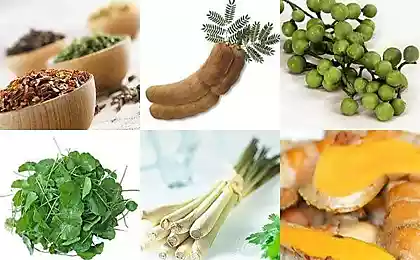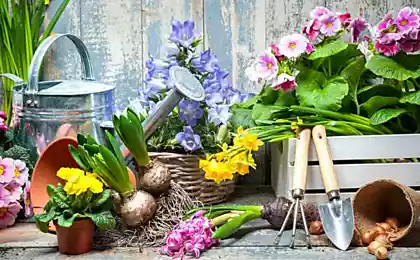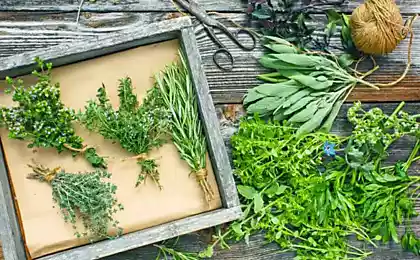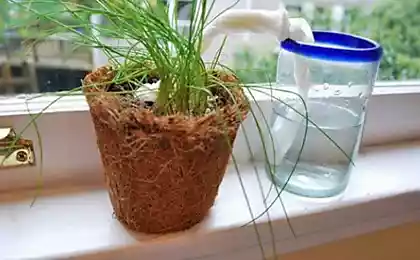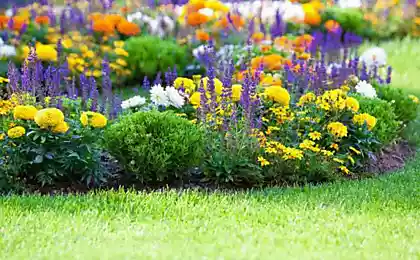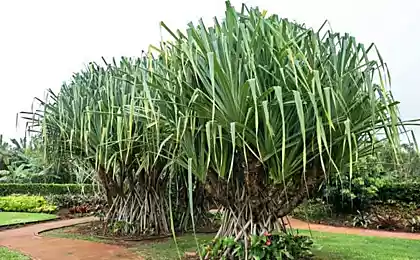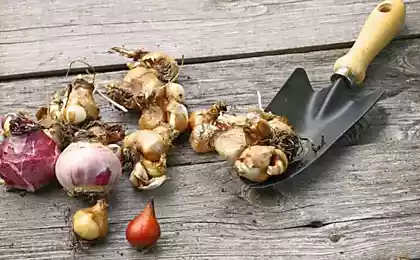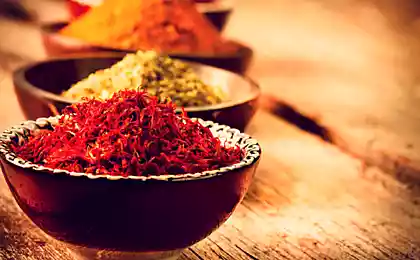545
Medicinal plants — NEED to know
1778, the Russian Empire. Described 3200 medicinal plants
The first half of the 19th century. The dominance of the German Pharmacopoeia. The ban of Russian medicinal plants. Forbidden and raise them in the Russian Empire. Drugs are imported from abroad.
"Foreign doctors are treated with arsenic, mercury and laughed at the Russian, who was treated onions, horseradish, radish, garlic, rose hips"
Isn't it all happening now? Open any Pharmacopoeia. There remained hardly a tenth of the plants, and with a severely limited range of actions for each plant.
But the usual grass plantain: antileukemic, anticancer, antiviral, modulate cellular immunity. Nettle as an anti-inflammatory. Well, etc, etc still live In the wilderness!
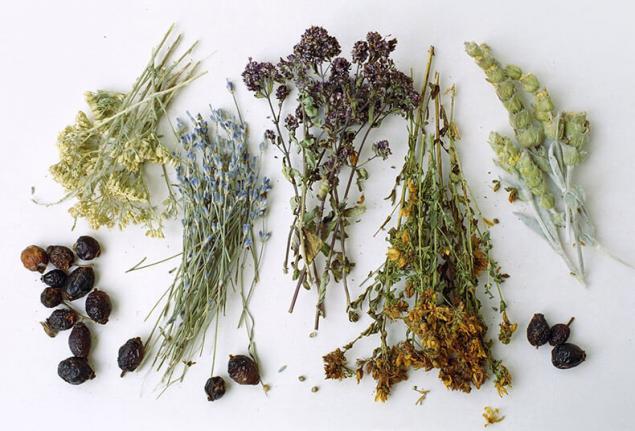
Healing herbs
In each plant zone from tundra to steppes of Kazakhstan, has its food and medicinal plants, as well as its own traditional medicine, which allow to adapt man to the conditions. Well written poet S. Kirsanov: “I am not a wilderness walk, I walk in the pharmacy sorting out her herb Rolodex”. Local natural pharmacy is undoubtedly more valuable for health and cheaper for your wallet.
The founder of pharmacognosy Professor A. F. Gammerman believed that the advantage of herbal medicinal substances prior to chemical is that the first produced in living cells. Therefore, even poisonous substances of the plants trapped in our body, not break so rude the entire system of biochemical reactions in the body cells of humans and animals, as do the drugs obtained by chemical means. I draw your attention to those plants which grow near your house, garden, cottage, near river, in the woods where often you are.
In our age it is customary to assume that the man is king of nature. Unfortunately, man forgets that he is the son of nature and should therefore, like any decent son to take care of his mother. In retrospect, we see that away from us offspring of nature, hiding its secrets away from people, noisy cities, polluted rivers, dusty wind and acid rain.
We didn't notice the helping hand of nature, and now wonder, running to pharmacies and baiting themselves with pills. But there is no such pills which could have cured the disease itself, but rather human, immediate, immediately and suddenly. Tablet, as experience shows, can remove the pain, but not a disease.
In nature, there is nothing uniquely harmful. Even the worst enemies of cultivated plants, weeds are the primary assistants to recultivation that return life to the wasteland, ash, slag, pyrite tailings affected by the oil disaster, poisoned, saline soils. Ergot is poisonous and harmful, and how many patients she has saved lives! No plants are useless, is unknown or has not received an objective assessment.
We should not forget that 98% of all food and energy needs of mankind is ensured thanks to the photosynthesis of plants. It is said that two rule life on earth – red sun green seed. Plants provide the atmosphere with oxygen deficit which is one of the most pressing issues of our time. The combustion of one ton of coal requires as much oxygen as necessary for life 10 employees during the year. And each car uses per 1,000 km per annum rate of oxygen for one person.

Siberia... What is not only glorious, this vast and rugged land! There is in its bowels the oil, gas, healing waters, deep rivers, swamps are the keepers of the mysteries of environmental sustainability and beauty of our deciduous and coniferous forests. Yet cedar pine is not uncommon. But take care of it now. Our ignorant abuse of nature, it turns against us.
The study and application of useful properties of plants in Siberia leaves in antiquity. Archaeological research has shown that already 5000 years ago in southern Siberia people use medicinal herbs.
Experience with the use of medicinal plants has been summarized in the “Flower beds” and “Herbalist”, “medical reference” were copied by hand and were very popular. Siberian herbs valued in Russia especially. Voivod Romodanovsky had a decree “to gather St. John's wort, growing in Siberia, to dry, grind and send to Moscow for a PUD in any year.”
The seventeenth century was a time of enhanced collect information about useful plants of Siberia. In 1675 headed the Embassy in China spafari was instructed “to find there the drugs.” In his diary he wrote: “the West Siberian Khanty collect in stock, dry and eat the roots of white Susak”. Siberian historic and geographer S. U. Remezov pointed to the places where the rhubarb is growing (it was at that time imported from China).
By order of Peter I in Siberia in 1719 was sent to Danzig doctor Daniel Messerschmidt “for raising herbs, roots, seeds, and other articles belonging to the drug charges”. He gathered information about 380 medicinal plants, putting the therapeutic use and time of collection.
For 9 years (1734-1743) traveled to Siberia botanist Gmelin.He created a four-volume work “flora of Siberia”, described 1178 species of plants and gave 294 drawing from nature. The largest botanist Carl Linnaeus believed that Gmelin has held the same job for volume and significance, botany, how everything Is put together. Linnaeus was keenly interested in plants of Siberia and raised in Sweden, hundreds of Siberian species. Peter I established a state-owned pharmacy and Apothecary gardens, which is controlled by the pharmaceutical order. Pharmacies at that time were small research centers; they studied the effect of medicinal raw materials.
The study of the natural resources of Siberia and was interested in M. V. Lomonosov. In his laboratory were made the first pharmaceutical analyses of medicinal plants brought from Siberia.
As a result of expeditions in Western and Eastern Siberia in 1778 was described 3200 species of medicinal plants that have been used in folk medicine. Published in the same year the first Russian Pharmacopoeia included 302 species of Russian medicinal plants, more than half of them were Siberian. Now our Pharmacopoeia them 3 times less.

In the first half of the XIX century the Russian Pharmacopoeia was replaced by German and forbade the cultivation of medicinal plants in the country have increased the importation of them from abroad, although the foreign drug was made from the Russian raw materials: licorice, Valerian, Burnet, Adonis and others. Foreign physicians treated with arsenic, mercury and laughed at the Russian, who was treated onions, horseradish, radish, garlic, rose hips.
As it later turned out, not everyone was so naive and unscientific in the centuries-old Russian practice. Used in scientific medicine, drugs, 80% came from the folk practice. If modern medicine is not treated condescendingly and dismissively to folk medicine, Russian public health would benefit more.
In Russia, and then, before 1930, in the Soviet Union, botany was a required subject for education of doctors, and each doctor had to have a reference herbarium of medicinal herbs growing in the area. In Russia it is accepted to write herbalists for priests and village healers. When the monasteries were pharmacy has recently revived itself and in Tyumen, at the monastery of Peter and Paul.
Why do not we appreciate your and their and are looking for a health protection on the side? To my shame we adopt fashion trends of supply and treatment in countries such as the USA, where every citizen eats in a year more than 50 kg of preservatives, dyes, disintegrating agents, where 30% of obese and 55 million drug addicts. From whom we take an example? Even the father of medicine Hippocrates was indignant about this: ”I Praise someone else, not checking its value, refuse to close, the value of which know prefer the unknown known.”
See also: the Most frequent cause of death in one picture
The mysteries of our brain: 15 interesting facts
P. S. And remember, only by changing their consumption — together we change the world! ©
Join us in Facebook , Vkontakte, Odnoklassniki
Source: www.facebook.com/permalink.php?story_fbid=1069445766432497&id=572853439425068
The first half of the 19th century. The dominance of the German Pharmacopoeia. The ban of Russian medicinal plants. Forbidden and raise them in the Russian Empire. Drugs are imported from abroad.
"Foreign doctors are treated with arsenic, mercury and laughed at the Russian, who was treated onions, horseradish, radish, garlic, rose hips"
Isn't it all happening now? Open any Pharmacopoeia. There remained hardly a tenth of the plants, and with a severely limited range of actions for each plant.
But the usual grass plantain: antileukemic, anticancer, antiviral, modulate cellular immunity. Nettle as an anti-inflammatory. Well, etc, etc still live In the wilderness!

Healing herbs
In each plant zone from tundra to steppes of Kazakhstan, has its food and medicinal plants, as well as its own traditional medicine, which allow to adapt man to the conditions. Well written poet S. Kirsanov: “I am not a wilderness walk, I walk in the pharmacy sorting out her herb Rolodex”. Local natural pharmacy is undoubtedly more valuable for health and cheaper for your wallet.
The founder of pharmacognosy Professor A. F. Gammerman believed that the advantage of herbal medicinal substances prior to chemical is that the first produced in living cells. Therefore, even poisonous substances of the plants trapped in our body, not break so rude the entire system of biochemical reactions in the body cells of humans and animals, as do the drugs obtained by chemical means. I draw your attention to those plants which grow near your house, garden, cottage, near river, in the woods where often you are.
In our age it is customary to assume that the man is king of nature. Unfortunately, man forgets that he is the son of nature and should therefore, like any decent son to take care of his mother. In retrospect, we see that away from us offspring of nature, hiding its secrets away from people, noisy cities, polluted rivers, dusty wind and acid rain.
We didn't notice the helping hand of nature, and now wonder, running to pharmacies and baiting themselves with pills. But there is no such pills which could have cured the disease itself, but rather human, immediate, immediately and suddenly. Tablet, as experience shows, can remove the pain, but not a disease.
In nature, there is nothing uniquely harmful. Even the worst enemies of cultivated plants, weeds are the primary assistants to recultivation that return life to the wasteland, ash, slag, pyrite tailings affected by the oil disaster, poisoned, saline soils. Ergot is poisonous and harmful, and how many patients she has saved lives! No plants are useless, is unknown or has not received an objective assessment.
We should not forget that 98% of all food and energy needs of mankind is ensured thanks to the photosynthesis of plants. It is said that two rule life on earth – red sun green seed. Plants provide the atmosphere with oxygen deficit which is one of the most pressing issues of our time. The combustion of one ton of coal requires as much oxygen as necessary for life 10 employees during the year. And each car uses per 1,000 km per annum rate of oxygen for one person.

Siberia... What is not only glorious, this vast and rugged land! There is in its bowels the oil, gas, healing waters, deep rivers, swamps are the keepers of the mysteries of environmental sustainability and beauty of our deciduous and coniferous forests. Yet cedar pine is not uncommon. But take care of it now. Our ignorant abuse of nature, it turns against us.
The study and application of useful properties of plants in Siberia leaves in antiquity. Archaeological research has shown that already 5000 years ago in southern Siberia people use medicinal herbs.
Experience with the use of medicinal plants has been summarized in the “Flower beds” and “Herbalist”, “medical reference” were copied by hand and were very popular. Siberian herbs valued in Russia especially. Voivod Romodanovsky had a decree “to gather St. John's wort, growing in Siberia, to dry, grind and send to Moscow for a PUD in any year.”
The seventeenth century was a time of enhanced collect information about useful plants of Siberia. In 1675 headed the Embassy in China spafari was instructed “to find there the drugs.” In his diary he wrote: “the West Siberian Khanty collect in stock, dry and eat the roots of white Susak”. Siberian historic and geographer S. U. Remezov pointed to the places where the rhubarb is growing (it was at that time imported from China).
By order of Peter I in Siberia in 1719 was sent to Danzig doctor Daniel Messerschmidt “for raising herbs, roots, seeds, and other articles belonging to the drug charges”. He gathered information about 380 medicinal plants, putting the therapeutic use and time of collection.
For 9 years (1734-1743) traveled to Siberia botanist Gmelin.He created a four-volume work “flora of Siberia”, described 1178 species of plants and gave 294 drawing from nature. The largest botanist Carl Linnaeus believed that Gmelin has held the same job for volume and significance, botany, how everything Is put together. Linnaeus was keenly interested in plants of Siberia and raised in Sweden, hundreds of Siberian species. Peter I established a state-owned pharmacy and Apothecary gardens, which is controlled by the pharmaceutical order. Pharmacies at that time were small research centers; they studied the effect of medicinal raw materials.
The study of the natural resources of Siberia and was interested in M. V. Lomonosov. In his laboratory were made the first pharmaceutical analyses of medicinal plants brought from Siberia.
As a result of expeditions in Western and Eastern Siberia in 1778 was described 3200 species of medicinal plants that have been used in folk medicine. Published in the same year the first Russian Pharmacopoeia included 302 species of Russian medicinal plants, more than half of them were Siberian. Now our Pharmacopoeia them 3 times less.

In the first half of the XIX century the Russian Pharmacopoeia was replaced by German and forbade the cultivation of medicinal plants in the country have increased the importation of them from abroad, although the foreign drug was made from the Russian raw materials: licorice, Valerian, Burnet, Adonis and others. Foreign physicians treated with arsenic, mercury and laughed at the Russian, who was treated onions, horseradish, radish, garlic, rose hips.
As it later turned out, not everyone was so naive and unscientific in the centuries-old Russian practice. Used in scientific medicine, drugs, 80% came from the folk practice. If modern medicine is not treated condescendingly and dismissively to folk medicine, Russian public health would benefit more.
In Russia, and then, before 1930, in the Soviet Union, botany was a required subject for education of doctors, and each doctor had to have a reference herbarium of medicinal herbs growing in the area. In Russia it is accepted to write herbalists for priests and village healers. When the monasteries were pharmacy has recently revived itself and in Tyumen, at the monastery of Peter and Paul.
Why do not we appreciate your and their and are looking for a health protection on the side? To my shame we adopt fashion trends of supply and treatment in countries such as the USA, where every citizen eats in a year more than 50 kg of preservatives, dyes, disintegrating agents, where 30% of obese and 55 million drug addicts. From whom we take an example? Even the father of medicine Hippocrates was indignant about this: ”I Praise someone else, not checking its value, refuse to close, the value of which know prefer the unknown known.”
See also: the Most frequent cause of death in one picture
The mysteries of our brain: 15 interesting facts
P. S. And remember, only by changing their consumption — together we change the world! ©
Join us in Facebook , Vkontakte, Odnoklassniki
Source: www.facebook.com/permalink.php?story_fbid=1069445766432497&id=572853439425068



